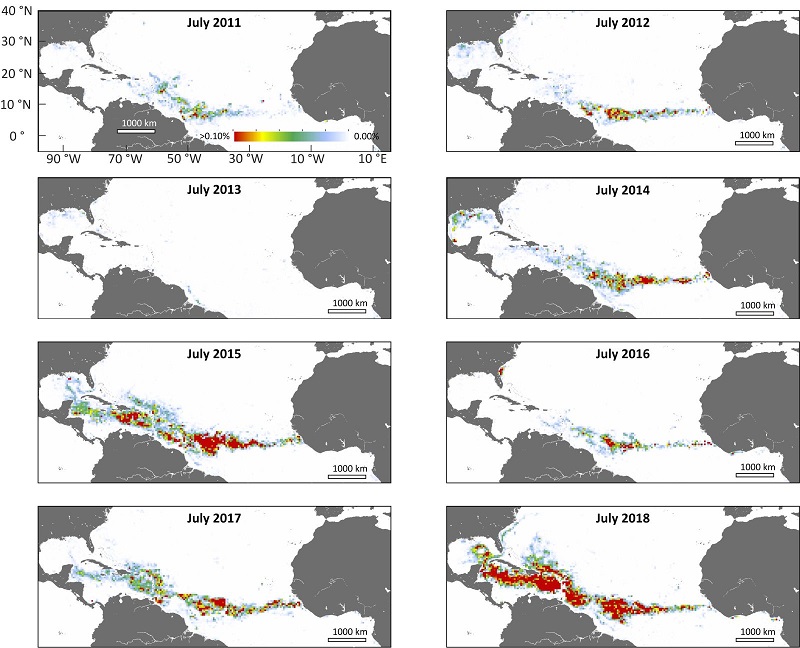
The circumference of the earth is about 40,000 km. However, 8,850km long, so a seaweed cluster, reaching about 20% of the earth’s circumference, occurred in the Atlantic Ocean.
The largest algae reserves in the world are spreading from the Gulf of Mexico to the coast of Africa. Not only does the abnormally sized breeding pose a threat to marine life and coastal areas, but the researchers who found it warn that the condition will continue in the future.
According to a paper published in the journal Science, the Great Atlantic Sargassum Belt (GASB) is the world’s largest for the spread of large algae. The identity of this giant algae belt is a photosynthetic brown algae. The University of South Florida’s marine science research team says that there are two reasons for remarkable breeding, anthropogenic and natural.
For this study, the research team investigated the results of satellite measurements collected from 2000 to 2018 by MODIS, an earth observation satellite of NASA. In the first decade of observation, algae masses were scattered across the Atlantic Ocean. However, since 2011, seaweeds have increased sharply every year and appear in areas that have not been known as habitats. The formation of the super-large GASB was in 2015 and was observed again in 2018.
A belt of 8,850 kilometers in length was observed from West Africa to Mexico in mid-2018, and the massive mass weighed an estimated 20 million tons. Usually, seaweed creates a habitat for marine life such as turtles, crabs, and fish, and plays a role in releasing oxygen through photosynthesis. However, too much can have adverse effects. With the reproduction of algae, marine life can become difficult to move or breathe and suffocate. Moreover, when algae die, they can sink to the bottom of the sea, destroying ecologically important corals and seaweed.

The outbreak of GASB is also a nuisance on the beach. Lots of swimmers discover rotting algae and smell like a rotten egg with hydrogen sulfide gas. Last year, the tropical Atlantic region, the Caribbean, the Gulf of Mexico and the east coast of Florida were threatened by the GASB. The outbreak of such large algae threatened the country’s valuable tourism industry in the case of Barbados, and declared a state of emergency.
The research team says that the outbreak of mass outbreaks indicates that the nature of the ocean is changing. Indeed, this abnormal growth is due to two factors, natural and artificial. A natural factor is the transfer of nutrients from the ocean floor to the sea where algae grows by the African coastal rise. The anthropogenic factor is that the Amazon River was introduced into the sea in the spring and summer when it became an excess of nutrients, such as deforestation and excessive use of chemical fertilizers.
Of course, the research team says that the evidence for eutrophication is based on limited data and environmental data, so further research is needed to test this hypothesis. Anyway, based on data over the past 20 years, the belt is highly likely to become the new standard. To support the claims, the research team analyzed the consumption patterns of chemical fertilizers and the Amazon deforestation rate in Brazil, and believes that both are in line with the growth trend of large algae that began nine years ago.
The research team aims to develop a model for predicting the reproduction of large algae in the future. It is also planning to study its impact on the fishing industry. Related information can be found here .


















Add comment